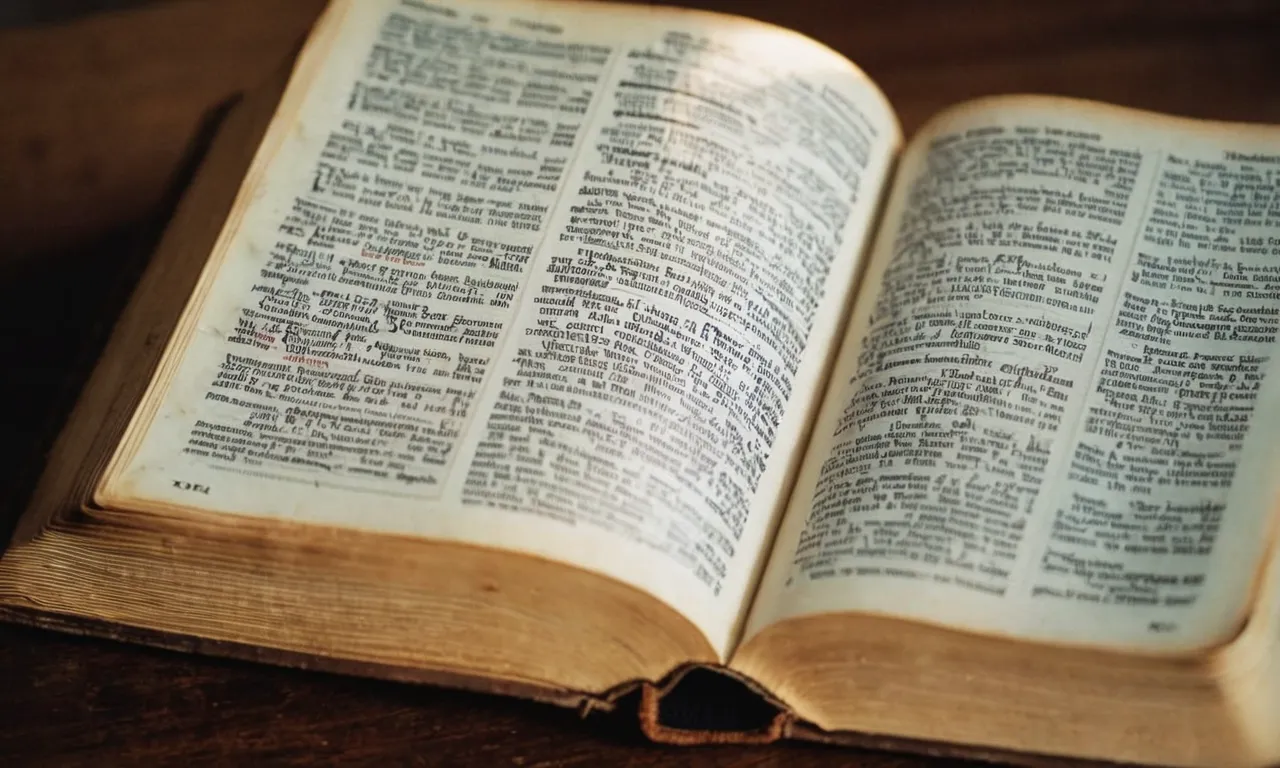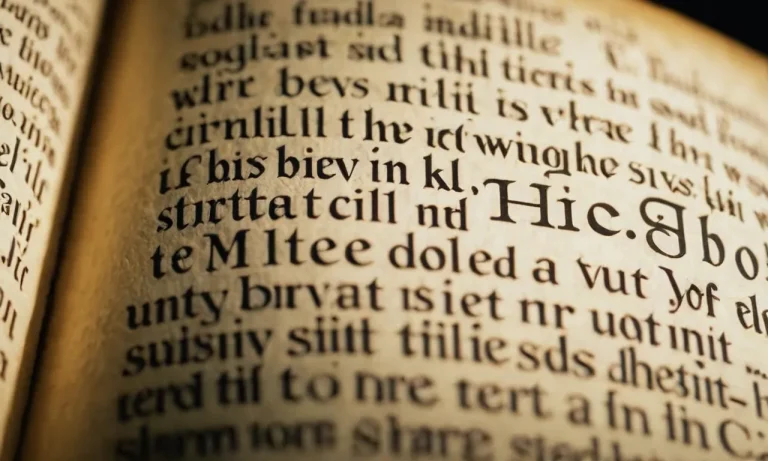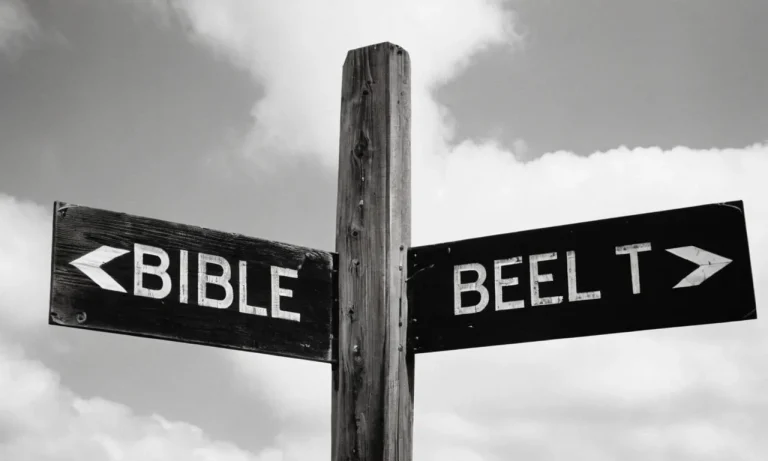How Many Times Is Prayer Mentioned In The Bible?
Prayer is a vital part of the Christian faith and the Bible has a lot to say about communicating with God. If you’ve ever wondered exactly how often prayer is mentioned in the scriptures, you’ve come to the right place.
If you’re short on time, here’s a quick answer to your question: prayer is mentioned over 450 times in the Bible.
In this comprehensive article, we will analyze the frequency of prayer references throughout both the Old and New Testaments. We’ve dug into the data to provide specifics on where prayer is discussed the most as well as the contexts surrounding biblical prayer mentions.
Overview of Prayer in the Old Testament
Prayer as Communication with God
Prayer is portrayed in the Old Testament as a means of communication between God and humans. From the earliest chapters of Genesis, there are examples of the patriarchs communicating directly with God through prayer.
As the stories progress, prayer develops into a cornerstone of the human-divine relationship, allowing people to offer petitions, intercessions, praise, and thanksgiving towards God.
Key biblical figures like Abraham, Moses, David, and others are depicted frequently engaging God through heartfelt prayer. Their prayers demonstrate and model an intimacy in relating to God. The writers of the Psalms especially capture the deep emotions, honesty, hopes, and fears that were expressed in prayer.
Notable Prayers in the Old Testament
Some prayers stand out for their raw passion and the insights they give into the human condition. David’s prayers of contrition in Psalms 51 after his adultery and murder show his remorse and desire for spiritual renewal.
Moses’ intercessory prayer on behalf of Israel in Exodus 32 illustrates his concern for God’s people and willingness to appeal to God’s mercy. Hannah’s prayer of dedication of her son Samuel in 1 Samuel 2 pours out her previous anguish of barrenness followed by joy and gratitude to God.
These affecting prayers give us glimpses into the humanity of the biblical figures while revealing their dependent relationship with their Creator. Their examples form spiritual templates for later generations to emulate in their own self-expressions to God.
Frequency of Prayer Mentions in Key Old Testament Books
Some Old Testament books are especially saturated with references to prayer, indicating its centrality in the religious practice of ancient Israel. The book of Psalms contains over 40 direct references to prayer. Genesis mentions prayer over 15 times.
Deuteronomy, 2 Chronicles, and Jeremiah all contain dozens of instances of prayer as the prophets, priests, and leaders cried out to God.
| Old Testament Book | Times Prayer is Mentioned |
|---|---|
| Psalms | Over 40 |
| Genesis | Over 15 |
| Deuteronomy | Approximately 26 |
| 2 Chronicles | Over 35 |
| Jeremiah | Approximately 64 |
The extensive inclusion of written prayers reveals their weight as an indispensable outlet for connection and petition to the Divine Power sustaining Israel amid exile, wilderness travels, monarchy tensions, and covenant renewal efforts.
Discussion of Prayer in the New Testament
Jesus’s Teachings on Prayer
Jesus taught extensively about prayer during his ministry on earth. In the Sermon on the Mount, Jesus instructed his followers not to pray ostentatiously like the hypocrites but to pray sincerely to God in secret (Matthew 6:5-6).
Jesus gave his disciples the Lord’s Prayer as a model of how to pray simply and humbly (Matthew 6:9-13). He emphasized the importance of persistence in prayer through the parable of the persistent widow (Luke 18:1-8).
Jesus also taught that prayer offered in faith could result in amazing miracles (Mark 11:24). Overall, Jesus’ teachings emphasized heartfelt, humble, and persistent prayer to God as our loving heavenly Father.
References to Prayer in the Epistles
The New Testament epistles contain many references to prayer and instructions about prayer. Paul frequently mentioned his prayers for the churches he wrote to (Philippians 1:4, Colossians 1:9). He asked the churches to pray for him and his ministry (Romans 15:30-32, Ephesians 6:19-20).
Paul instructed believers to pray constantly, be joyful in prayer, and bring all requests to God in prayer (1 Thessalonians 5:17, Philippians 4:6). Other epistles, like James, tied prayer to faith and righteous living (James 5:13-18).
1 John gave assurance that God hears prayers offered according to his will (1 John 5:14-15). The epistles portray prayer as an essential spiritual practice and means of grace for all believers.
Acts of Prayer in Revelation
The book of Revelation records dramatic scenes of prayer and worship. The twenty-four elders surround God’s throne constantly singing praises and casting their crowns before him (Revelation 4:10-11). The martyrs under the altar cry out in loud prayer for God to avenge their blood (Revelation 6:9-11).
At the opening of the seventh seal, there is silence in heaven for half an hour as the heavenly hosts worship God (Revelation 8:1-5). In Revelation 8:3-4, an angel offers incense with the prayers of the saints at the golden altar before God.
Scenes like these demonstrate the centrality of prayer and worship around God’s throne. Revelation highlights the daily worship and prayer continually ascending to God from his people.
Breakdown of Prayer References by Bible Book
The Bible contains numerous references to prayer, with prayers mentioned in nearly every book. Here is a breakdown of some of the top Bible books that mention prayer:
Psalms
The Book of Psalms contains the most references to prayer out of any book in the Bible. There are over 40 prayers contained just within Psalms alone. Key Psalms that focus specifically on prayer include Psalms 4, 5, 17, 55, 65, and 109.
Given that Psalms is one of the most popular books for individual and corporate prayer, it makes sense that prayer would be so heavily mentioned throughout its 150 chapters.
Matthew
The Gospel of Matthew contains 28 chapters and opens with a genealogy tracing Jesus’ lineage. Throughout the book, there are several important prayers offered by Jesus himself (Matthew 11:25-26; Matthew 26:36-46; Matthew 27:46) as well as multiple teachings by Jesus on effective prayer (Matthew 6:5-14; Matthew 7:7-11; Matthew 21:22).
The Lord’s Prayer is contained in Matthew 6:9-13.
Genesis
Though commonly associated with the creation story and the patriarchs (Abraham, Isaac and Jacob), Genesis also contains many episodes involving prayer. Key characters offering prayers include Abraham (Genesis 15:2-3; Genesis 17:18), Isaac (Genesis 25:21), Jacob (Genesis 28:20-22; Genesis 32:9-12), and Moses (Genesis 33:13).
These prayers helped shape the trajectory of God’s people in profound ways.
Jeremiah
The weeping prophet Jeremiah offered up several passionate prayers during his ministry, many are which are recorded in the book bearing his name. Jeremiah 11:20; Jeremiah 15:15-21; Jeremiah 17:13-18; Jeremiah 18:19-23; Jeremiah 32:16-25 are examples of Jeremiah crying out honestly to the Lord during seasons of immense hardship.
The personal and intimate nature of Jeremiah’s prayers provide a model for authentic relationship with God.
While references to prayer certainly abound throughout the Old Testament books of prophecies and laws, Jesus provides the ultimate exemplar for connection with God the Father through prayerful relationship in the gospels.
Exploring prayer as modeled by key biblical figures can help enrich and deepen our own prayer lives.
Conclusion
In closing, prayer is an integral theme woven throughout scripture from Genesis to Revelation. As we have seen, direct and indirect references to communicating with God appear over 450 times in the Bible.
Now that you understand where prayer is emphasized most prominently, you can better appreciate how foundational it is within the Judeo-Christian tradition.








